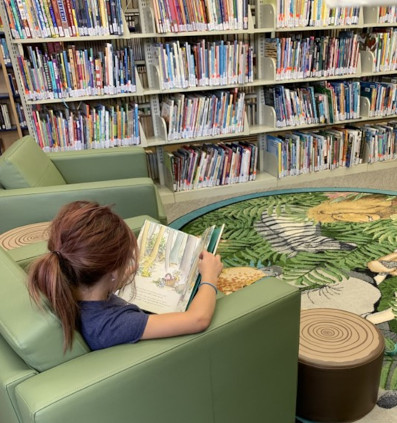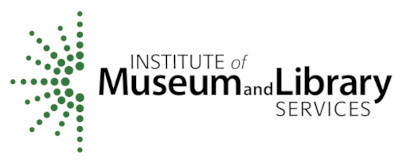You are here
Colorado Public Library Standards
These standards serve as an important tool in defining and measuring a Colorado public library’s success in fulfilling its mission and role in the community. Each of the ten standards topics includes an outcome statement, an overview, and checklists.

Introduction
The goals of the Colorado Public Library Standards are to:
- Serve as models for achieving a consistent quality of library offerings across the state.
- Inform community leaders and residents about what they can expect from their community library(ies) as well as ideas for growth and development.
- Assist library leaders in planning, administration, and implementation of library responsibilities.
- Provide an authoritative document to which library administrators and supporters may refer when justifying requests for funds and expanded library offerings.
- Assist library staff and leadership in connecting with the communities they serve.
- Spark discussion, assessment, planning, and other action in all public libraries so they remain vital community hubs.
The Standards and Colorado Library Law
Public libraries are established and maintained according to the provisions of the Colorado Library Law (C.R.S. § 24-90-101 et seq.) and other legal requirements. The Colorado State Library is charged by this law to provide standards that ensure all Coloradans have quality library services. This document provides support and guidance for all public libraries to deliver and improve upon those services.
What are Standards?
The Colorado public library standards identify requirements, evidence-based practices, and resources that are essential for all public libraries in Colorado regardless of the size of library, budget, and community.
Standards center on key aspects of a successful Colorado public library in the 2020s. While the standards identify current issues, services, and best practices in Colorado public librarianship, they are not intended to be a detailed road map to each library's future. This document can inform but does not replace a library's strategic plan.
How to Use These Standards
The ten topical standards each include an outcome, overview, and two checklists. The checklists provide stakeholders with ways the library does or can address each standard to achieve the stated outcome. All Colorado public libraries have basic requirements and activities that are essential to quality service for their communities.
The “Essentials” checklists apply to all libraries no matter the size, staff, resources, or funding. The “Essentials +” checklist for each standard adds additional practices for public libraries with more revenue, staffing, and resources. Some libraries may exceed many or all listed practices, while others may be constrained by funding or other circumstances.
To distinguish between the Essentials and Essentials + checklists, a threshold of the smallest and least-funded libraries has been established. The 35 library jurisdictions (30% of Colorado library jurisdictions) that serve populations under 2,500 and/or have an annual operating budget of $165,000 or less will focus specifically on the Essential checklists. All other libraries will use both the Essentials and Essentials + checklists to determine areas of strength and growth that are locally relevant.
Every community is different. What is important is that the board of trustees, director, staff, and community:
- Assess the current state of the library.
- Identify existing strengths to build upon.
- Determine priorities for development.
- Plan to make the changes.
- Implement plans with fidelity.
- Consistently review and iterate to achieve the plan.
- Report on achievements and impacts.
To support the checklists, an accompanying resource document provides data, tools, and examples relevant to each standard’s activities. The Colorado State Library, the Colorado Library Consortium, and other agencies offer consulting support, training, and resources to achieve the standards.
Library leadership will decide locally on how best to use this document. At minimum, the Colorado State Library recommends an annual review that may prompt, for example, a list of to-dos, key areas for policy development, adjustments to services or budgets, or the need for a more thorough review of existing practices, etc. A few major initiatives may float to the top of the planning priority list, such as increased services to a particular population. Or a whole new awareness may be sparked from realizing the need for a comprehensive risk management strategy that aligns with other community resilience planning.
For directors and board members, the standards are a guide for decision-making for the public library in their community. To this end, library directors may choose to review each standard by bringing one to each board meeting throughout the year. Staff, community members, and other stakeholders are encouraged to attend these discussions about how the standards apply to library services and improvements.
Regardless of the various methods for using this document, the intent is that Colorado communities continue to enjoy and rely on their public libraries for vital and recreational services well into the future.
Context for the Standards Revision
The following considerations guided the development of this document:
- Colorado public library jurisdictions operate with different legal authority and governance structures as outlined in Colorado law (See C.R.S. § 24-90-103 for the definitions of library types and C.R.S. § 24-90-107 for the public library establishment process). The current legal status of Colorado public library jurisdictions are:
- 57 Library Districts
- 37 Municipal Libraries (City/Town)
- 11 County Libraries
- 5 Multijurisdictional Libraries (school & town)
- 1 City/County
- 1 School Administered Library
Within the document, distinctions are identified when appropriate between library districts (which are distinct government entities with their own legal governing authority) and other library types, such as municipal, county, and others (operating under local government leadership).
- Colorado public libraries vary widely in the number of residents within their legal service areas (LSA).
- The smallest public library legal service area has 361 residents while the largest public library jurisdiction serves 706,799 residents.
- Eighty-two (73%) public library jurisdictions are considered small and/or rural, serving populations under 25,000 and nearly 8% of all Coloradans. These public libraries have 111 of 271 library buildings in the state.
- The eight largest library jurisdictions have 99 buildings, 9 bookmobiles, and serve 63% of all Coloradans.
- Twelve Colorado libraries are identified as Resort Libraries, serving tourists as well as residents. These libraries report higher use and funding than other libraries serving a similar size legal service area.
To address these variations, the Colorado State Library’s Library Research Service identifies peer groups within Colorado libraries for more refined analysis. See resources for these data.
- Colorado communities allocate different levels of public library financial support that result in inconsistencies and disparities in library services across the state.
- Public libraries serving populations under 2,500 had operating expenditures per capita rates ranging from $5.31 to $242.24 with the overall average of $65.50 per capita (2022 data).
- Public libraries serving over 2,500 residents and with annual operating expenditures of over $165,000 had operating expenditures per capita rates ranging from $15.45 to $468.72 with the overall average of $81.50 per capita (2022 data).
Standards and the associated data resources illuminate these disparities to inform local decision makers with the goal that all Coloradans may enjoy quality library services.
- Every public library undertakes essential methods to maintain the public trust, including following legal requirements; employing professional values, ethics, policies, and practices; and maintaining governance and operational responsibilities with integrity, transparency, and accountability.
- To serve the public good, public libraries have long been concerned with reaching underserved members of their communities. An equity lens, a process to analyze the impact of policies and practices on such individuals and groups, has also been integrated throughout the standards.
- Libraries utilize technology to support the vision, mission, and goals of their organizations. Technology use is ubiquitous in the library and as such is integrated throughout the standards.
- Colorado libraries have a proud tradition of collaboration, coordination, and colleague support to strengthen each library for each community. Resource sharing and partnerships are prioritized in the standards to reflect that core value.
- The 10 library standards inherently have overlaps that may result in topics and activities being addressed in different ways, contextually, in more than one standard.
Standards Development
This document was developed by the Public Library Leadership Development Team of the Library Development Office of the Colorado State Library. A facilitator from McCord Consulting Group supported the Equity, Diversity, and Inclusion aspects of this document. Ten task forces of stakeholders from Colorado public libraries met multiple times and two public reviews aided in the iterative development of the document.
Acknowledgements
Many thanks to the following people who substantially contributed to the development of this document.
Carrie Andrew | Lone Cone Library District
Sherri Baca | Pueblo City-County Library District
Nancy Barnes | Garfield County Public Library District
Kara Bauman | Lyons Regional Library
Shara Berghuis | Wray Public Library
Ken Draves | Poudre River Public Library District
Marjorie Elwood | High Plains Library District
Jenny Mae Gaechter | Pikes Peak Library District
Polly Gallagher | Grand County Library District
Lanna Gonzales | Lake County Public Library
Melissa Hisel | Lafayette Public Library
Sue Lathrop | Lamar Public Library
Nikki McCord | McCord Consulting Group
Tim Miller | Rampart Library District
Adam Murray | Marmot Library Network
Chris Newell | Grand County Library District
Claudine Perrault | Estes Valley Library District
Amie Pilla | Berthoud Library District
Stephanie Ralph | Summit County Libraries
Julianne Rist | Jefferson County Libraries
Sara Wright | Colorado Library Consortium
Several Colorado State Library staff aided in the development of this Standards document:
Nicolle Davies, Assistant Commissioner
Library Development | Mary Bills, Tiah Frankish, Kieran Hixon, Cristy Moran, Sharon Morris
Library Research Service | Charissa Brammer, Dana Petersen
Networking and Resource Sharing | Marisa Wood

This project was made possible in part through grant funds from the Institute of Museum and Library Services (IMLS) administered by the Colorado State Library.
For more information, contact Kieran Hixon, Rural & Small Library Consultant: hixon_k@cde.state.co.us



Connect With Us





